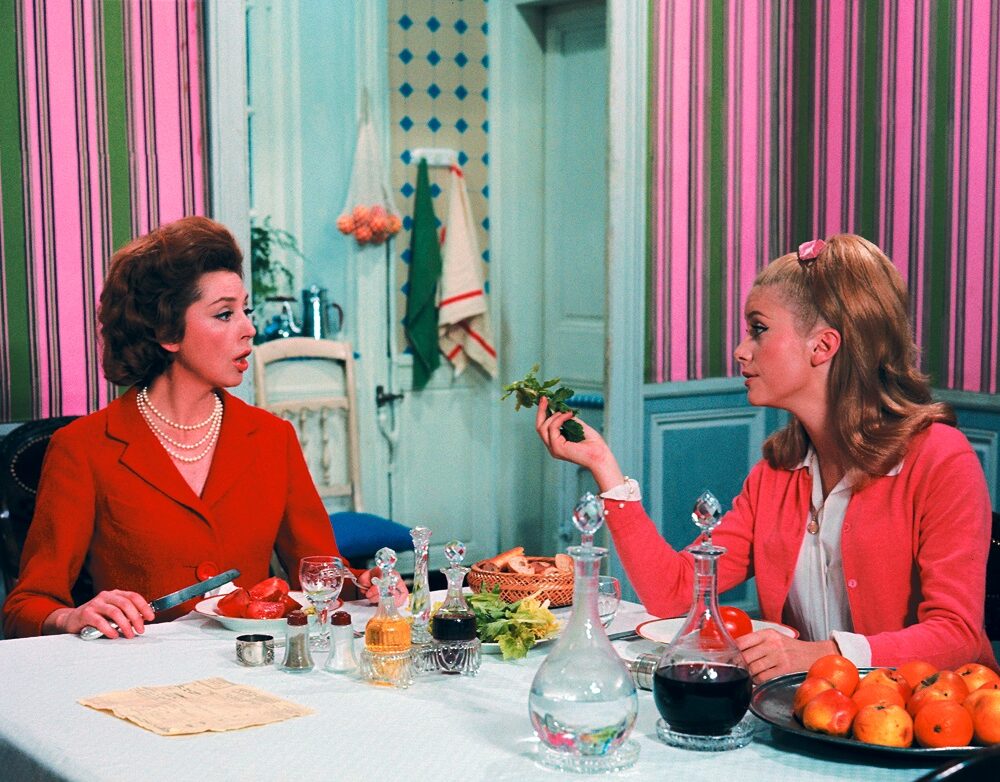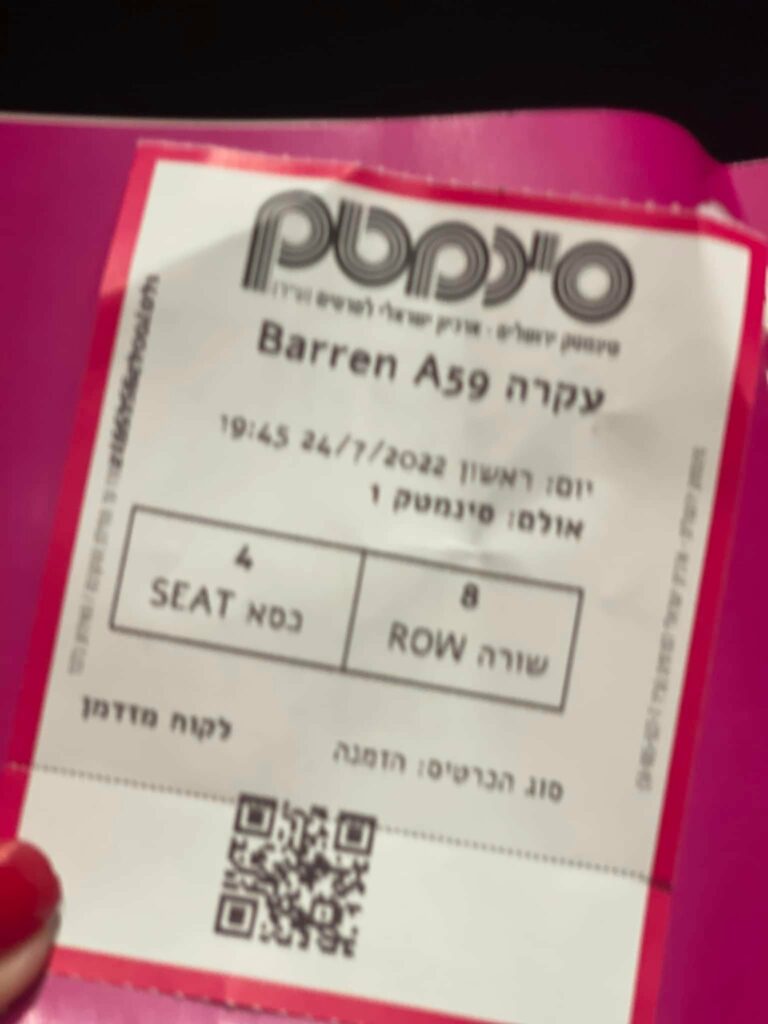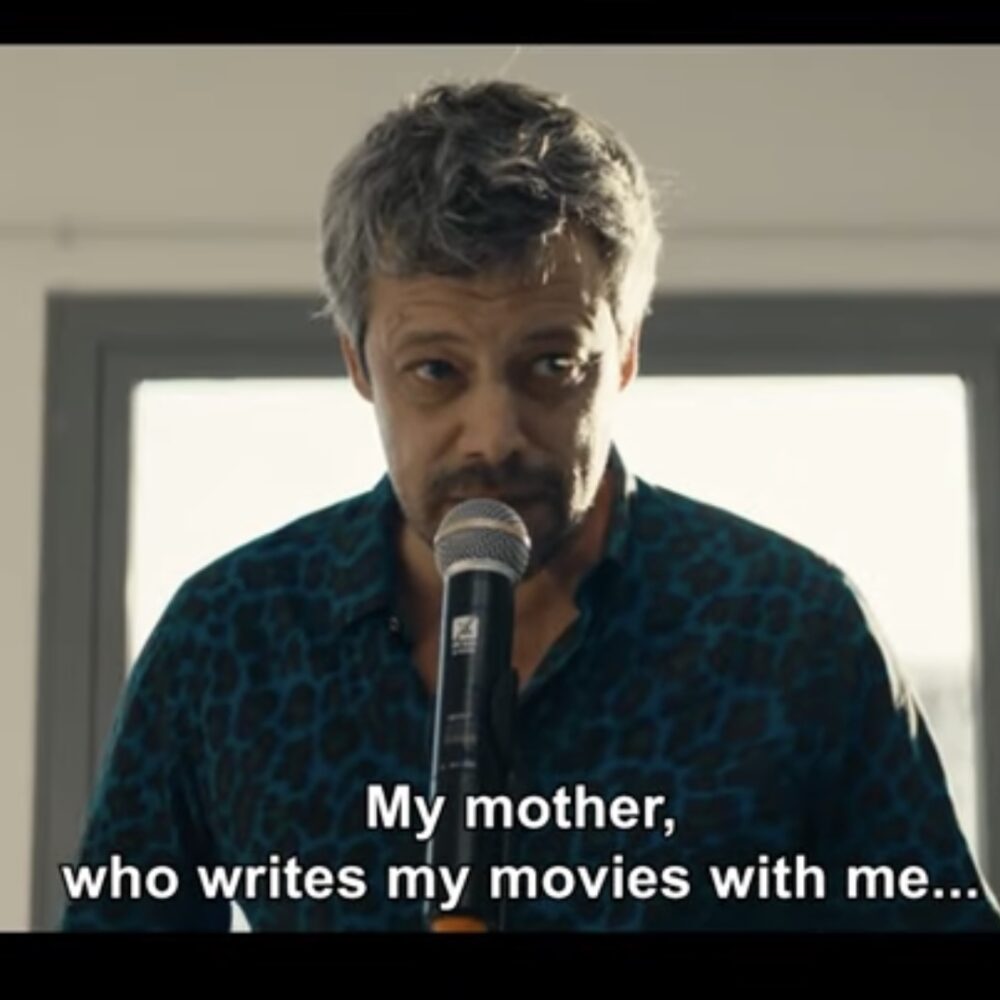Year: 1964
The Frame
Jacques Demy’s 1964 musical film, The Umbrellas of Cherbourg, tells a brilliantly crafted story about the dichotomies of life—success and hardship, youth and maturity, love and heartbreak. Gorgeous shots by cinematographer Jean Rabier, vibrant set pieces, and memorable characters turn a story of star-crossed lovers kept apart by an obligation to family, duty to country, and class expectations, into a cinematic experience.
The Umbrellas of Cherbourg focuses on the multi-generational struggle of pragmatism versus the optimism and naivety of youth. The growing tension between Genevieve and her mother is evident in this frame.
The scene magically and movingly come to life with a vibrant two-dimensional perspectivity, displaying color-coordinated characters, boldly and beautifully blending in with their surrounding environs and wallpapered interiors. The beautiful color scheme: florals, prints, and block colors, become 3-d with items which seem to jump off the palette: the yellow lemons, the bouquet of flowers, the pitcher of water, and the wine glasses.
The Red Suit and The Pink Sweater
Here we see Deneuve dressed in a vibrant pink sweater, seated diagonally from her mother clad in a buttoned red suit. In the background, the wallpaper is striped pink and green. The choice of clashing colors brings violence and strength to the scene’s look. On the surface, the story seems so sweet, like a romance. However, in reality, the story is about a class struggle, with the bourgeois mother determined that her teenage daughter not marry her young sweetheart, the garage mechanic, Guy (Nino Castelnuovo), with whom she is smitten. However, Mme. Emery will stop at nothing to ensure that Genevieve marries a wealthy diamond merchant played by Marc Michel. In the hopes that this cultured (but somewhat cold) man of travel will raise their social aspirations.
The Red Tomato
Noticeable in the frame is the red cherry tomato on Genevieve’s plate. The tomato matches her middle-aged prejudiced, and insecure mother’s red suit. It is clear from this frame that Genevieve is being force-fed her mother’s values while dressed in a romantic girlish pink sweater (now open and unbuttoned in contrast to the earlier scene). The extent of Genevieve’s conflict is referenced by the contrasting green leaf in her hand.
The Blue Chair
While only two characters are in the scene, the shot is wide enough to see the empty chair separating the mother and daughter.
It is clear from this shot and so many other breathtaking frames in the film, The Umbrellas of Cherbourg that Demy and cinematographer Jean Rabier succeeded in creating a non-artificial world, anchoring the film’s pure visual poetry to the specifics of urban reality. Leading the film shot in 1964 to have an everlasting place in cinema and remain one of the greatest films.
Kudos to Demy’s widow, Agnes Varda, for her careful reconstruction in which Demy’s 1960 colors, including bright pink, reds, purples, and oranges, continue to mesmerize audiences.










